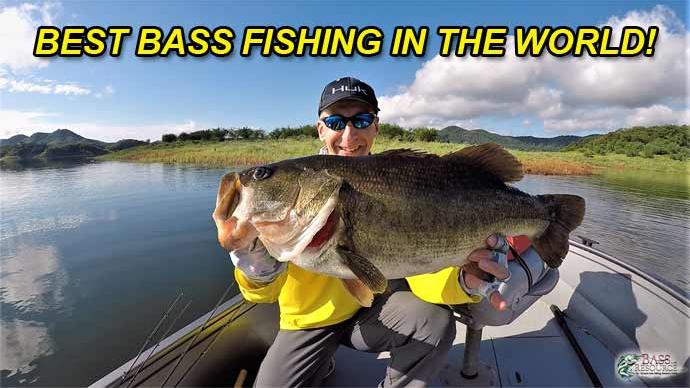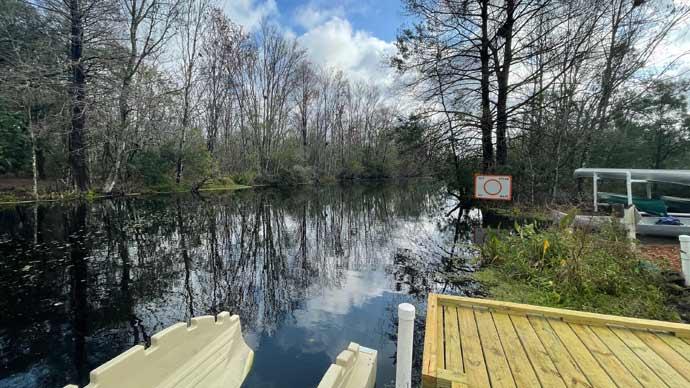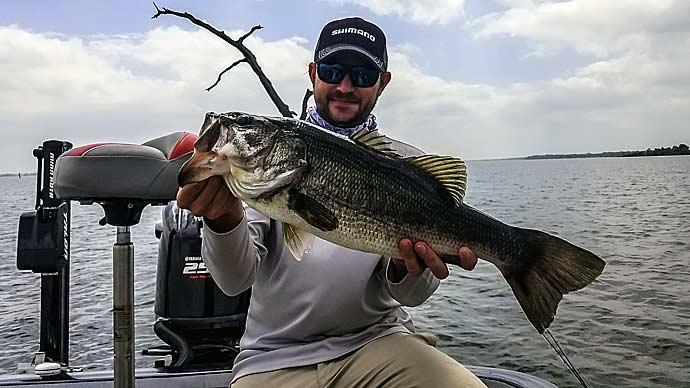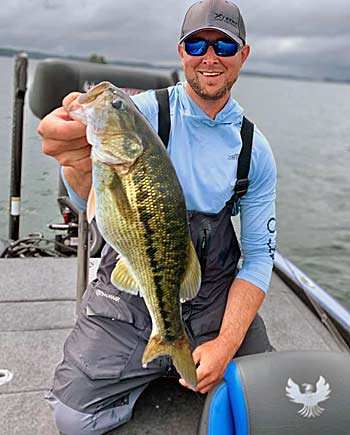
Not too far outside of the big city of Atlanta is a bass angler's paradise: Lake Lanier. In recent years, it has blossomed into one of the premier spotted bass fisheries in the country while also producing some big largemouth bass. So Lanier is the place to be in that region if you want consistent action from bass, with the chance to catch a spotted bass of a lifetime.
Lake Lanier guide Rob Jordan grew up near the lake and has spent the last 15-years guiding on the lake and shares some tips on approaching the different seasons of this dynamic fishery.
Spring in Georgia
According to Jordan, dealing with a lake with primarily spotted bass and the vast differences in water temperatures throughout the lake creates a long spawning process.
"A good percentage of the fish are coming and going for a much longer time than other lakes," he said. "They don't all rush the bank at the same time, and you can catch bedding fish in 2-feet of water and then go out to 25-feet and catch others on brush piles the same day. So there will be fish in all stages of the spawn from late March to June most years."
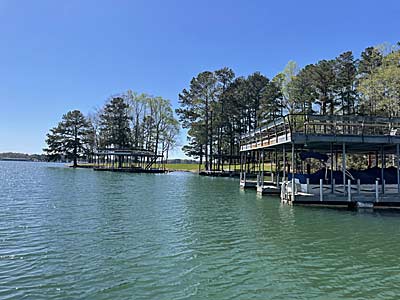
Jordan looks for spawning spotted bass on main lake points and bars as the bass spawn can coincide with the spawn of the blueback herring. They are the dominant forage for spotted bass and an open-water baitfish, and the spotted bass tend to spawn deeper in proximity to their favorite food. Still, Jordan focuses on floating docks, slow tapering points, and clay and rock banks.
"Floating docks are everywhere on Lanier, and they are one of the most consistent ways to locate fish in the spring," he said. "The lake is also full of points, and I look for secondary points between the main lake and the pockets and slow tapering points with a mix of gravel and rock."
While many baits will catch spotted bass in the spring months on Lake Lanier, Jordan says soft plastics are the top option. "Soft plastics are a staple for springtime spotted bass everywhere, and it could be a drop-shot, Ned Rig, shaky head, wacky rig, or a Neko Rig," he said. "Day in and day out, they are the best producers, and all you have to do is experiment with different baits, rigs, and colors."
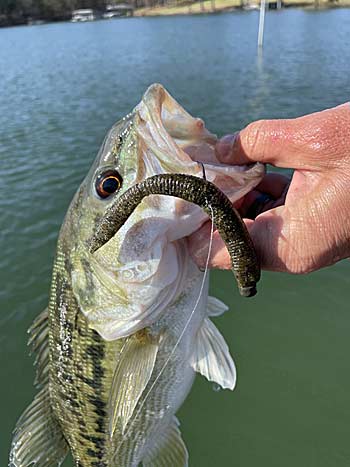
For covering water and locating fish, Jordan says it's hard to beat a spinnerbait or jerkbait, and he'll also mix in specialty blueback herring, imitating baits during the spring months.
"On windy days in April and May, a flashy spinnerbait fished with a "pump and burn" retrieve is a great way to catch spotted bass," he said. "A jerkbait is another staple for covering water. It's also a good time to fish a wake bait and use a slow wind retrieve on the surface to draw fish up."
Summer on Lanier
After the bass spawn, deep water is the place to be on Lake Lanier. Therefore, much of the fishing is done around the many brush piles on the lake.
"Spotted bass on Lanier spend roughly 80-percent of the year offshore on humps, underwater islands, and in the brush on the lower two-thirds of the lake," said Jordan. "The deeper water has more oxygen for the fish, and that's where the blueback herring are. The good thing about spotted bass is that they are never alone, and if you find one, you'll be around a bunch of them."
To find summertime fish on Lake Lanier, Jordan is typically fishing specific targets he locates with his electronics in 15 to 35-feet of water and will use a run and gun approach, quickly rotating spots until he lands on biting fish.
"June is when the offshore brush and timber bite gets stable, and you can run that into fall," he said. "The trick is to find what bait they want that day; some days they'll want a drop-shot, and other days, it will be a shaky head. So it changes day to day, and sometimes the best approach is a swimbait fished over the top of them, or it could be a jerkbait."
Jordan believes two of the biggest keys this time of year are stealth and rotating through spots.
"Some people get hung up on finding big schools of fish, but there are schools everywhere out there, and it comes down to fishing them in the little windows when they are biting," he said. "I may have 25 spots I hit and keep rotating through them throughout the day; usually, it's the first cast or two when they bite, and that's why being stealthy is so important. You need to be conscious of how you approach a spot and make a cast before they know you are there, which means lining up and making a long cast on target before they sense the boat."
Fall and Winter
As the summer bite wanes, Jordan says many of the bass in Lake Lanier follow the typical fall pattern of migrating with baitfish to the creeks. It can lead to some superb topwater action.
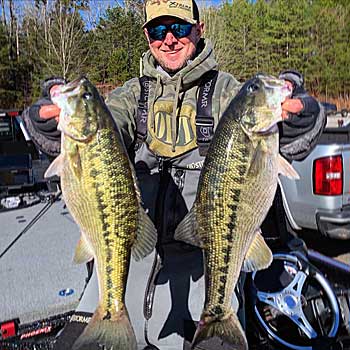
"October and November are great for fishing topwaters as the bass start to feed up for the winter," he said. "It's very visual, and I'm watching for fish blowing up, paying attention to the birds, and covering water looking for schooling activity."
As temperatures cool, Jordan starts to look for rock structure that provides more warmth.
"When we get nights dipping into the 30s, I focus on rocks," he said. "Crankbaits, jigs, underspins, Ned Rigs, and swimbaits are all good. They also start to become more positioned in ditches as it gets colder. Some days you have to drag and creep a bait on the bottom to get bit."
Lake Lanier is a regional jewel with many big spotted bass swimming in its waters. The lake has a long and storied history as a top bass fishery, and right now, it's as healthy as ever. Fishing the Georgia lake is a unique experience, and it continues to pump out both big numbers of bass with the chance for a spotted bass of a lifetime on any given day.


